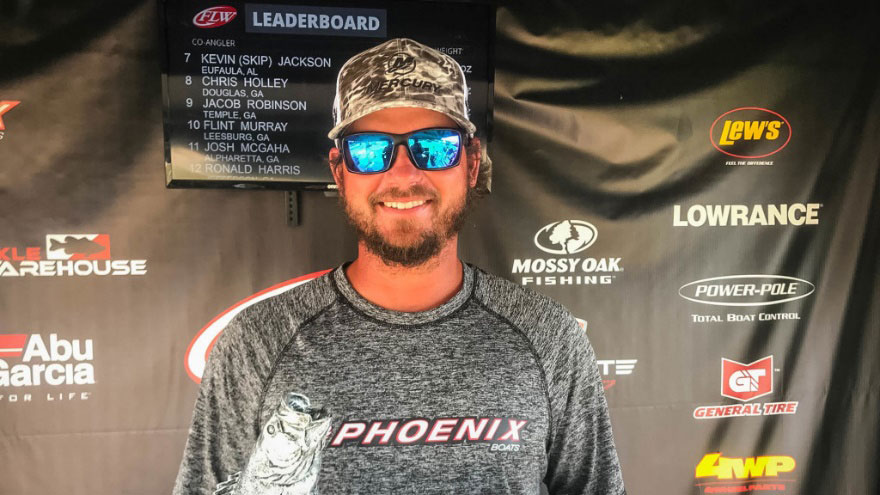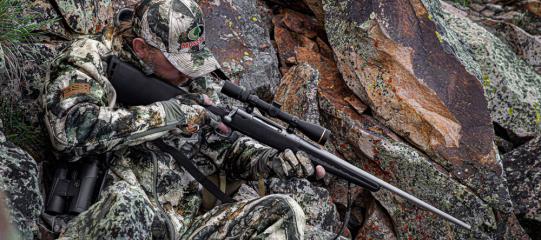
Although Mossy Oak Pro Drew Benton of Blakely, Georgia, fishes the Bassmaster Elite Series, finishing in early June in third place at the Lake Eufaula tournament, he had an open weekend when the Phoenix Bass Fishing League held a local, one-day tournament there. In years past, Benton fished the BFL that’s owned by the FLW that holds tournaments in 11 countries, and knew many of the participants.
“Since this tournament was held after the Elite tournament, there was no conflict in my fishing it,” Benton said. “I’ve moved to Blakely and now consider Lake Eufaula my home lake.”
With a three-bass limit for the day, Benton knew he had to try to catch three, very big bass. His plan was to fish the mayfly hatch and attempt to catch one big bass feeding on the bream feeding on those mayflies. Next, he would move to deep water and attempt to catch two big bass off the ledges.
“I fished a Spro popping frog under the trees where the mayflies were,” Benton said. “I had four bass follow the frog out the day before when I fished, and I caught the smallest bass – a 5 pounder. So, on the morning of the tournament, I returned to the site of the mayfly hatch. However, the U.S. Army Corps of Engineers had dropped the water level 8 feet overnight. I only was able to get one bite in this area and caught a 6-plus-pound bass.”
Next Benton moved out to deep water, 18-28 feet deep, realizing that the large schools of big bass received so much fishing pressure in the summer that they would break into “wolf packs of five to 10 bass,” explained Benton. “I was able to scan those ledges with my Lowrance LiveSight and could follow the wolf packs to try and catch them.”
Benton was fishing an 8-inch Mini Magnum flutter spoon made by Nichols that had a shad pattern on one side of the spoon and chrome on its other side. He used a 7’7” heavy action MBX Phenix rod with 20-pound test Seaguar InvizX fluorocarbon line on a high-speed reel.
“I liked the spoon because when it fluttered to the bottom, it would swim away from the boat,” Benton said. “Pictured on my Lowrance electronics were rings that told me how far I was from the bass I was hoping to catch. I understand exactly where to cast and would know where the spoon would swim to and land right in the front of the bass. Therefore, I didn’t have to waste any casts and could put the spoon right in front of the bass on every cast, without having to hold my boat right on top of the bass.”
At the weigh-in, Benton’s total weight for a three-bass limit for the day was 17 pounds, 8 ounces. He’d thrown two other bass back that would have weighed close to 5 pounds each. “So, if the tournament had a five fish limit, I could have weighed in 27-plus pounds of bass,” Benton mentioned. “I took home a check for $6500 for winning the tournament and another $500 for catching the biggest bass of the day – 6 pounds, 14 ounces.”
In early July, Benton drives to New York State for three, consecutive Bassmaster Elite Series tournaments and won’t return home until about August 4. To learn more about how Benton fishes for hot weather bass, check out “Finding Deep Water Grass for Hot Weather Bass” and “How to Catch Hot Weather Bass.”




























